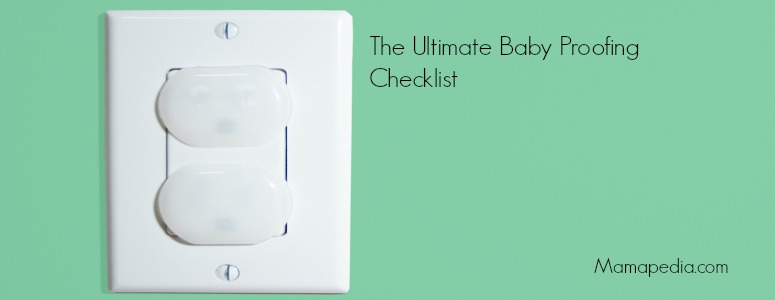
The Ultimate Baby Proofing Checklist
Baby’s finally here and you’ve crossed your i’s and dotted your t’s, but have you remembered to cover the corners on your coffee table? And what about locks on ground cabinets? Once the crawling begins at about six months, you’ll want to make sure you’ve babyproofed your entire living space to ensure your little one remains safe and sound. We reached out to several experts to help you do just that.
Your Home, in General
No – you don’t have to scrub the floor, but you do need to view the world from your baby’s perspective, says Varda Meyers Epstein, a parenting expert at Kars4Kids. Literally get low to the ground and think about things from the perspective of a lovably clueless, mischievous, highly curious baby. Here’s a list to get you started:
• Make sure you cover all furniture edges with corner guards. If the legs of your furniture are sharp, wrap them, as well. For example, a cast iron, decorative coffee table leg may be pretty, but it’ll hurt if bumped into.
• Stabilize rugs with non-slip rug guards.
• Plug all unused electrical outlets with outlet plug covers. “Unfortunately, to crawling babies, outlets can look like eyes in a face, so they can’t help but want to touch and explore them with their (often wet from drool) fingers and hands,” says Epstein.
• Use child safety drawer and cabinet locks to keep kids from digging around in cabinets. “Even if it’s not at baby height, toddlers are ingenious at climbing and finding ways to reach things they want,” notes Epstein.
• Secure your windows, too. “People often forget about baby proofing windows, but about 5,000 kids fall out of windows each year,” says Sarah Brown, a home safety expert for SafeWise. “There are different types of latches that won’t leave marks on your home when your child is old enough to take them down, but for the most part, the strongest and most efficient baby locks screw into your walls or appliances.
• Don’t forget about your plants! Some are toxic if ingested, so do some research and get rid of anything that’s not safe – no matter how pretty it is.
The Kitchen and Bathroom
Now that you’ve fully engaged “baby vision/mentality mode,” walking into the kitchen or bathroom may feel a little overwhelming. There are a lot of potential hazards, so be mindful as you survey each room.
• “Ensure all products are sealed securely and placed out of reach of children,” says Sage Singleton, also of SafeWise. The kitchen and bathroom may have the highest concentration of these items, but also poison-proof the laundry room, garage, and shed.
• Keep the toilet seat down and secured with a clamp.
• Keep the toilet brush and plunger locked up with your cleaning products. We often keep these in the open next to the toilet, but there’s a lot of bacteria on these two items so make sure they’re out of reach.
• “When cooking with babies and toddlers in the house, use the back burners on the stove as they are out of reach of small children,” says Singleton.
• Kitchens often have low cabinetry, so make sure these are always locked and secured.
The Nursery
In addition to following the advice above, you’ll want to make sure that you consider the safety in your nursery, as well. This is where your baby will spend much of her time, so heed this advice from our experts.
• Research and choose a safe crib. “The Consumer Product Safety Commission (CPSC) has a crib certification to meet safety standards, so don’t buy a crib without this certification on it,” says Brown. “This now includes drop side cribs, which are no longer CPSC certified.”
• Adjust the mattress height as your child gets bigger. You’ll need to be able to drop the mattress down so your child can’t crawl out.
• “Avoid placing cribs or play mats near windows,” notes Singleton. “Accidents involving window coverings and cords are among the most common and most dangerous. A simple baby-proofing hack is to strategically place furniture away from potentially dangerous locations.”
• Keep mobiles out of reach, unless then are specifically approved for children to play with.
• Remove stuffed animals from the crib, as well as large, fluffy bedding. These are choking and suffocation hazards.
Wendy Rose Gould is a writer based in Phoenix, Arizona. She covers women’s lifestyle topics for numerous digital publications, including InStyle, xoVain, Refinery29, Revelist, PopSugar and ModCloth. You can follow her on Twitter and Instagram or at WendyGould.com